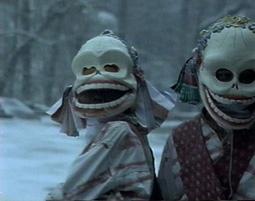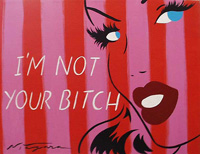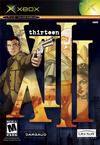july  2008
2008
Last weekend, after spending the last six months without a printer and the previous 12 with a printer of unpredictable functionality (which increasingly depended on the state of its ink cartridges and my mastery of vs. impatience with the refill kit process), we finally bought a new "all-in-one" printer (actually, better than new — "BNIB" on craigslist).
So this weekend, I was determined to get it all hooked up so I could spend hours printing six months' worth of photographs and anything else I've wanted to print but could not, lo, these many months. Consulting the "quick reference guide" as well as the manual, I unpacked and set everything out on the coffee table, then neatly flattened the box and disposed of all the packing foam, clear plastic bags and twist ties, whereupon I noticed that there's been an innovation in twist tie design.
These new twist ties are made of a surprisingly inflexible plastic — somewhat reminiscent of stiff but unbending Christmas tinsel, and very nearly untwistable — which made me wonder; what kind of a mouth-breathing troglodyte of an industrial designer would you have to be in order to fuck up a marvel of minimalist utility like the twist tie?
So, once everything was unpacked, I realized there was no "power adapter" to be found (that's the little part that you plug their proprietary power cord into that makes it compatible with, you know, outlets). I looked and searched and turned the unit upside down and shook it vigorously, then looked inside the unit, opened all the doors and windows, turned over the couch cushions and finally decided that it was probably like the USB cable that the instructions coyly mention "may not be included." ("May not." What is that, like "may contain peanuts?" We're just not able to say for sure. We'd prefer not to promise anything... but you may be pleasantly surprised...)
Anyway, we had another adapter from some other printer of the same brand and it seemed to work fine with that. So, instructions in one hand, I followed all the steps right up to the part where it's supposed to start printing a test page automatically, as soon as you close the door to the print cartridges you've just snapped "gently" into place, praying you and the company have similar definitions of "gently." The printer lights all flashed on and the cartridges buzzed as they zipped around inside, making an impressive series of clunking noises and jerking the paper tray around before resolving into a configuration of "error" lights that, of course, didn't quite match up with any of the ones listed in the manual.
After going through the first four steps in the set up manual three or four more times with increasingly deliberate motions, I yanked the ink cartridges out and, holding them firmly but delicately, like pieces of California Roll, between the fingers of one hand, I crouched with my face at eye level to the place where they snapped in. I balanced a mini-flashlight on the threshold of the paper tray and peered, first into the left, then the right corner... and there it was. The goddamned, pointless adapter for the stupid proprietary — yet working perfectly well without it — power cord. Just then, for reasons I still cannot fathom, the ink cartridge holding mechanism clunked and went zipping into the far right corner of the machine where I couldn't see it but where I knew it was just waiting for me to stick my hand in to get the bloody adapter that was folded way up in the far left corner, looking like nothing so much as the alien hiding in amongst the bulkheads on the escape pod, lying in wait while Sigourney Weaver strips down to her underwear.
I scowled and muttered "don't move" and then performed a little ritual contortion whilst praying to the technological spirits of the machine that I would be allowed to extract the cursed item without giving up my hand as a sacrifice to the multifunction gods. As it turned out they didn't want my hand, or even blood, just my time — all day, as it turned out.
I then installed the factory software — "as recommended," even (what the hell, let's just say "I agree" to all of it?) and then there was the updating and the upgrading and the automatic tests and the settings and the discovery, two new versions later, that this "all in one suite" of photo software won't let me print three 4x6 prints on a letter-size page.
WTF?? It's the default paper size and the most common photo size — go to any store and pick up a photo album! They're all 4x6! There are tons of printers available now that only print 4x6 (we call that "Vancouver apartment-sized"). I tried Picasa, which I didn't even know we had installed, and finally resorted to their online help menu, only to discover that they don't allow this inexplicably elusive combination either.
As a last resort, I eventually opened the Windows Photo Printing Wizard and two minutes later the device was spitting out letter-sized sheets of 4x6 photos, three to a page, like it wasn't no thang. By that point, I was unable to relish my victory and I quit after two pages, turned the thing off and went back to my marathon of Jon Stewart interviews on the Comedy Network web site (where, unlike Comedy Central, I and my fellow Canadians are actually allowed to watch The Daily Show!).
 We watched the most amazing documentary last weekend called Black Sun; here's a synopsis from HBO's web site:
We watched the most amazing documentary last weekend called Black Sun; here's a synopsis from HBO's web site:
"In 1978, artist and filmmaker Hugues de Montalembert lost his sight in a tragic random mugging in New York. Through de Montalembert's words as well as evocative images and music, this documentary tells the story of one man's difficult yet determined adaptation to a world without sight." Read more
Watching it is a trip because you really have to pay close attention; partly just to catch every word spoken by the artist-narrator in his soft, French-accented voice, but also because you've never heard a story quite like this before. Each facet of it opens up in your mind new realms of previously unimagined reality. If your mental image of what life without sight looks like contains a thumbnail of, say, Audrey Hepburn in "Wait Until Dark" (not to diss it — it's a great thriller), Black Sun will rearrange your entire file hierarchy under the "blindness" heading.
It's one of those things where you're riveted and trying to take in every word but every word seems to unleash a new cloud of dandelion seeds in your brain. Between stretches of silent amazement punctuated by bursts of exhilarating insight, we found ourselves pausing the DVD over and over so we wouldn't miss anything during our many free-association outbursts (yes, we are intolerable — and, as you might imagine, we can no longer watch movies in public.)
[Right: "Gimme Back My Money vs Gimme All Your Money" from The Largest Majority]
My quote of the week comes from a commenter called XMan over at Hard-boiled Dreams of the World: "I hope there is a revolution happening somewhere..."
Back in the mid-90s, at least one journalist (sadly, I don't remember which) spotted an interesting trend that, ever since the Clintons took office, there seemed to be a spike in the number of movies and television shows that portrayed the President as a single man.
 They cited the classic example of The American President, Aaron Sorkin's 1995 dress rehearsal for The West Wing, in which the title character was both a widower and an eligible bachelor. The journalist wondered whether this trend was indicative of the public's dislike or a less-defined distrust of Hillary Clinton and further speculated that it might be symptomatic of an even deeper distrust of ambitious women in general.
They cited the classic example of The American President, Aaron Sorkin's 1995 dress rehearsal for The West Wing, in which the title character was both a widower and an eligible bachelor. The journalist wondered whether this trend was indicative of the public's dislike or a less-defined distrust of Hillary Clinton and further speculated that it might be symptomatic of an even deeper distrust of ambitious women in general.
By the Clintons' second term, the sex scandals were stacking up, a tug-of-war between the executive branch and the Republican-controlled Congress was heating up and Hollywood was no longer satisfied with merely writing the first lady out of the picture. In 1998, Independence Day offered her up as a blood sacrifice; Bill Pullman played the President who, after tragically losing his wife to an alien invasion, not only saved the world but came out swinging single. The same plot point was played for laughs in Mars Attacks.
A number of films also came out in the 90s depicting the first couple as estranged or separated; the implication being, as in Bulworth (1998), that it was probably because the first lady was a harpy. To be fair, there was also a small surge in movies portraying the president as an adulterer, like Dave and Murder at 1600; as an adulterous pervert in Wag the Dog (1997) and even as a murdering adulterous pervert in Absolute Power.
I'm not sure if Primary Colors (1998) counts as part of this trend or not but it does remind me of a favorite late-night moment when Jay Leno was interviewing John Travolta and they were talking about visiting the White House. Leno asked what it was like having dinner with the Clintons and Travolta replied with a huge grin that every time he met the President, all he could think about was how well he nailed his character in Primary Colors. (True dat.)
 Well, I started to notice a new trend back in June 2004 when I read this article in the Washington Post about Nicholson Baker's soon-to-be-published novella, "Checkpoint," planned for release just in time for the 2004 Republican National Convention. It wasn't a review, mind you; it was a news article about the provocative plot of the book, in which "a man sits in a Washington hotel room with a friend and talks about assassinating President Bush."
Well, I started to notice a new trend back in June 2004 when I read this article in the Washington Post about Nicholson Baker's soon-to-be-published novella, "Checkpoint," planned for release just in time for the 2004 Republican National Convention. It wasn't a review, mind you; it was a news article about the provocative plot of the book, in which "a man sits in a Washington hotel room with a friend and talks about assassinating President Bush."
"Though it is against the law to threaten the president in real life," the article noted, "a work of fiction is usually protected by the First Amendment." It went on to relate the White House's reaction in the words of Charles Bopp, a spokesman for the Secret Service: "Without seeing the work, a determination can't be made at this time." [Full article]
Freedom of speech and freedom of the press are such vague terms, aren't they? I'm sure what the founding fathers meant to say is that we would have to wait and see what people were saying and writing before they could make a determination.
 Probably the most striking and, it must be said, innovative example of this trend was the 2006 release Death of a President, an unsettlingly realistic documentary-style film that was advertised (let's be honest) as anti-neocon wish fulfillment but actualized as a cautionary fable. The moral of this story: don't even think about it. The movie humorlessly illustrates its nightmarish vision of a dark, post-GW future world, broken and repentant under the iron boot of a vengeance-bent President Cheney. (In fact, those last two words have probably been more effective at keeping this president alive and kicking for two terms than the Secret Service, Air Force One and Kevlar could ever be.)
Probably the most striking and, it must be said, innovative example of this trend was the 2006 release Death of a President, an unsettlingly realistic documentary-style film that was advertised (let's be honest) as anti-neocon wish fulfillment but actualized as a cautionary fable. The moral of this story: don't even think about it. The movie humorlessly illustrates its nightmarish vision of a dark, post-GW future world, broken and repentant under the iron boot of a vengeance-bent President Cheney. (In fact, those last two words have probably been more effective at keeping this president alive and kicking for two terms than the Secret Service, Air Force One and Kevlar could ever be.)
There have been so many movies since 2000 featuring POTUS-cide as a plot driver that I'm sure this list only represents a fraction of the phenomenon:
Shooter (2007)
The Assassination of Richard Nixon (2004)
Vantage Point (2008)
The Manchurian Candidate (2004)
Blind Horizon (2003)
X2 (2003)
The Sentinel (2006)
Æon Flux (2005)
 Television shows have also been on the bandwagon since 2001 with shows like Prison Break and 24, which formed a fictional bridge between the Clinton and Bush administrations by featuring both the death of a first lady and a presidential assassination plot. As well, the upcoming miniseries "XIII" (based on the video game based on the graphic novel) begins with an Independence Day assassination of the first woman President then follows her killer on a quest to uncover the truth about the murder and his own identity. I would also count the remake of All the King's Men and Bobby (2006), which were both based on events surrounding the actual assassinations of historical presidential candidates.
Television shows have also been on the bandwagon since 2001 with shows like Prison Break and 24, which formed a fictional bridge between the Clinton and Bush administrations by featuring both the death of a first lady and a presidential assassination plot. As well, the upcoming miniseries "XIII" (based on the video game based on the graphic novel) begins with an Independence Day assassination of the first woman President then follows her killer on a quest to uncover the truth about the murder and his own identity. I would also count the remake of All the King's Men and Bobby (2006), which were both based on events surrounding the actual assassinations of historical presidential candidates.
This brings me to the most recent and, to myself anyway, most disturbing trend. After more than half a century of science fiction showing us in no uncertain terms that, next to videophones and flying cars, a black President was the surest sign of a progressive future, we finally have a candidate who stands a good chance of making that future a reality. So why is it every time he makes a public appearance we're all bracing ourselves for the sound of gunshots?
It probably started just moments after his first speech at the Democratic Convention in 2004 and it will probably remain an uncomfortable yet integral part of his complex public persona all the way through (god willing) that chilly January day in 2017 when President Obama leaves the Oval office in the capable hands of his equally well-loved VP. Until then, it seems we'll have to put up with a whole lot of anxiety over this man's safety.
Maybe it's all the comparisons to Bobby Kennedy and Martin Luther King — which, now that I mention it, really must stop — I mean, come on, people! What are we trying to do, hex the man? (Okay, I know. I did it too, once.)
